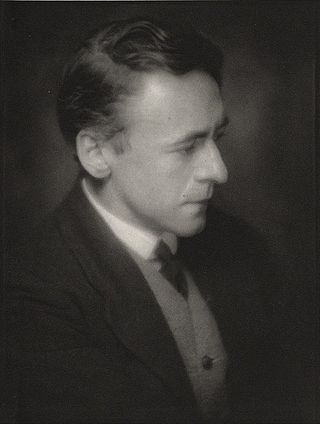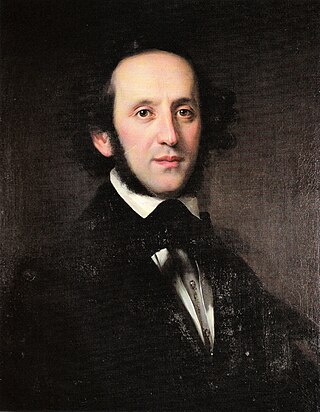Related Research Articles

Sir Arnold Edward Trevor Bax was an English composer, poet, and author. His prolific output includes songs, choral music, chamber pieces, and solo piano works, but he is best known for his orchestral music. In addition to a series of symphonic poems, he wrote seven symphonies and was for a time widely regarded as the leading British symphonist.

Sergei Rachmaninoff's Piano Concerto No. 3 in D minor, Op. 30, was composed in the summer of 1909. The piece was premiered on November 28 of that year in New York City with the composer as soloist, accompanied by the New York Symphony Society under Walter Damrosch. The work has the reputation of being one of the most technically challenging piano concertos in the standard classical piano repertoire.

Ludwig van Beethoven's Piano Sonata No. 29 in B♭ major, Op. 106 is a piano sonata that is widely viewed as one of the most important works of the composer's third period and among the greatest piano sonatas of all time. Completed in 1818, it is often considered to be Beethoven's most technically challenging piano composition and one of the most demanding solo works in the classical piano repertoire. The first documented public performance was in 1836 by Franz Liszt in the Salle Erard in Paris to an enthusiastic review by Hector Berlioz.

Felix Mendelssohn's Violin Concerto in E minor, Op. 64, MWV O 14, is his last concerto. Well received at its premiere, it has remained among the most prominent and highly-regarded violin concertos. It holds a central place in the violin repertoire and has developed a reputation as an essential concerto for all aspiring concert violinists to master, and usually one of the first Romantic era concertos they learn. A typical performance lasts just under half an hour.

The Cello Sonata No. 3 in A major, Op. 69, is the third of five cello sonatas by Ludwig van Beethoven. He composed it in 1807–08, during his productive middle period. It was first performed in 1809 by cellist Nikolaus Kraft and pianist Dorothea von Ertmann, a student of Beethoven. Published by Breitkopf & Härtel the same year, it was dedicated to Freiherr Ignaz von Gleichenstein, Beethoven's friend and an amateur cellist. The sonata was successful with audiences from the beginning.

The Symphony No. 2 in E minor, Op. 27, is a four-movement composition for orchestra written from October 1906 to April 1907 by the Russian composer Sergei Rachmaninoff. The premiere was performed at the Mariinsky Theatre in Saint Petersburg on 26 January 1908, with the composer conducting. Its duration is approximately 60 minutes when performed uncut; cut performances can be as short as 35 minutes. The score is dedicated to Sergei Taneyev, a Russian composer, teacher, theorist, author, and pupil of Pyotr Ilyich Tchaikovsky. The piece remains one of the composer's most popular and best known compositions.

The Piano Sonata No. 31 in A♭ major, Op. 110, by Ludwig van Beethoven was composed in 1821 and published in 1822. It is the middle piano sonata in the group of three that he wrote between 1820 and 1822, and is the penultimate of his piano sonatas. Though the sonata was commissioned in 1820, Beethoven did not begin work on Op. 110 until the latter half of 1821, and final revisions were completed in early 1822. The delay was due to factors such as Beethoven's work on the Missa solemnis and his deteriorating health. The original edition was published by Schlesinger in Paris and Berlin in 1822 without dedication, and an English edition was published by Muzio Clementi in 1823.

Ludwig van Beethoven's Piano Sonata No. 1 in F minor, Op. 2 No. 1, was written in 1795 and dedicated to Joseph Haydn. It was published simultaneously with his second and third piano sonatas in 1796.
Cello Sonatas No. 1 and No. 2, Op. 5, are two sonatas for cello and piano written by Ludwig van Beethoven in 1796, while he was in Berlin. While there, Beethoven met the King of Prussia Friedrich Wilhelm II, an ardent music-lover and keen cellist. Although the sonatas are dedicated to Friedrich Wilhelm II, Ferdinand Ries tells us that Beethoven "played several times at the court, where he also played the two cello sonatas, opus 5, composed for Duport and himself". Although Jean-Pierre Duport was one of the King's teachers, it is now thought to have been his brother Jean-Louis Duport who had the honor of premiering these sonatas.

Tintagel is a symphonic poem by Arnold Bax. It is his best-known work, and was for some years the only piece by which the composer was known to many concert-goers. The work was inspired by a visit Bax made to Tintagel Castle in Cornwall in 1917, and, although not explicitly programmatic, draws on the history and mythology associated with the castle.
The Piano Sonata No. 3 in F minor, Op. 5 of Johannes Brahms was written in 1853 and published the following year. The sonata is unusually large, consisting of five movements, as opposed to the traditional three or four. When he wrote this piano sonata, the genre was seen by many to be past its heyday. Brahms, enamored of Beethoven and the classical style, composed Piano Sonata No. 3 with a masterful combination of free Romantic spirit and strict classical architecture. As a further testament to Brahms' affinity for Beethoven, the Piano Sonata is infused with the instantly recognizable motive from Beethoven's Symphony No. 5 during the first, third, and fourth movements. Composed in Düsseldorf, it marks the end of his cycle of three sonatas, and was presented to Robert Schumann in November of that year; it was the last work that Brahms submitted to Schumann for commentary. Brahms was barely 20 years old at its composition. The piece is dedicated to Countess Ida von Hohenthal of Leipzig.
The Concert Fantasia in G, Op. 56, for piano and orchestra, was written by Pyotr Ilyich Tchaikovsky between June and October 1884. It was premiered in Moscow on 6 March [O.S. 22 February] 1885, with Sergei Taneyev as soloist and Max Erdmannsdörfer conducting. The Concert Fantasia received many performances in the first 20 years of its existence. It then disappeared from the repertoire and lay virtually unperformed for many years, but underwent a revival in the latter part of the 20th century.
The Symphony No. 2 in E minor and C major by Arnold Bax was completed in 1926, after he had worked on it for two years. It was dedicated to Serge Koussevitzky, who conducted the first two performances of the work on 13 and 14 December 1929.
November Woods is a tone poem by Arnold Bax, written in 1917. Ostensibly a musical depiction of nature, the work conveys something of the composer's turbulent emotional state arising from the disintegration of his marriage and his love affair with the pianist Harriet Cohen. According to the composer, the piece is not programmatic, but evokes mood rather than painting a picture or telling a story.
Benjamin James Dale was an English composer and academic who had a long association with the Royal Academy of Music. Dale showed compositional talent from an early age and went on to write a small but notable corpus of works. His best-known composition is probably the large-scale Piano Sonata in D minor he started while still a student at the Royal Academy of Music, which communicates in a potent late romantic style. Christopher Foreman has proposed a comprehensive reassessment of Benjamin Dale's music. Dale married one of his students, the pianist and composer Kathleen Richards in 1921.
British composer Michael Tippett composed his Concerto for Piano and Orchestra between 1953 and 1955 on a commission from the City of Birmingham Symphony Orchestra. The overall character of the work was influenced by the composer's hearing German pianist Walter Gieseking rehearse Ludwig van Beethoven's Fourth Piano Concerto in 1950. Its musical content, while influenced by this concerto, was also shaped largely by Tippett's opera The Midsummer Marriage, which he had completed in 1952. While Tippett had conceived the work initially in the mid-1940s, he had been preoccupied in much of the intervening time with The Midsummer Marriage.
Sonatina is a work for piano solo in three movements composed in 1926–27 by John Ireland (1879–1962). He dedicated it to his friend, the conductor and BBC music producer, Edward Clark.
The Garden of Fand (1916) is a tone poem by the English composer Arnold Bax. It was inspired by an Irish mythical figure, Fand, the daughter of the lord of the ocean. The work does not portray the events of the mythical tale, but evokes Fand's island. The composer had been greatly influenced by Celtic culture in his earlier works, but described this one as his last in that vein.
The Concerto for Piano and Orchestra is a piano concerto by the American composer John Corigliano. The work was commissioned by the San Antonio Symphony and was first performed on April 7, 1968, by the pianist Hilde Somer and the San Antonio Symphony under the direction of Victor Alessandro. The piece is dedicated to John Atkins.
The Secret Life of Arnold Bax is a 1992 British TV movie directed by Ken Russell, who also stars in the title role as composer Arnold Bax. It was one of eight musical drama documentaries directed by Russell for The South Bank Show on London Weekend Television between 1983 and 2002. The film focuses on the composer's complicated relationship with pianist Harriet Cohen while at the same time seeking inspiration for his music from the dancer Annie. As with all of Russell's films on composers the drama serves as a showcase for the music. Set in 1948, when the film Oliver Twist had just been released, the film mostly uses earlier compositions such as The Garden of Fand, Tintagel and the Symphony No 2 as its soundtrack. Lewis Foreman was musical adviser.
References
- Foreman, Lewis, notes for Continuum CCD 1045, Arnold Bax: Piano Music (1992: London, C.L. Continuum Ltd.), John McCabe, pianist.
- Foreman, Lewis, ed. Stanley Sadie, "Bax, Sir Arnold (Edward Trevor)," The New Grove Dictionary of Music and Musicians, Second Edition (London: Macmilian, 2001), 29 vols. ISBN 0-333-60800-3.